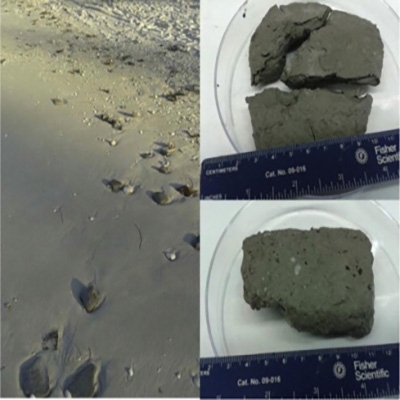
Sand patties provide evidence for the presence of Deepwater Horizon oil on the beaches of the West Florida Shelf
A new study out of the University of South Florida and the University of Tennessee has provided evidence that oil from the Deepwater Horizon blowout reached beaches of the West Florida Shelf. Researchers analyzed polycyclic aromatic hydrocarbons (PAHs), a “highly ubiquitous and mutagenic class of components of crude oils”, to trace oil from the DWH spill. PAHs accumulate in sediments over time and biodegrade very slowly, which makes them useful for identifying oil. Researchers also tested for the presence of dioctyl sodium sulfosuccinate (DOSS), a significant component of the dispersant used in the DWH clean up.
Sand patties collected from a beach in Pinellas County, Florida contained PAHs that were similar to those found in Florida’s panhandle, Alabama, and Louisiana following the spill. They were not similar to samples from an earlier oil spill in Tampa Bay. Background levels of DOSS were present in the beach’s sand, but they were significantly higher in the sand patties themselves; this indicates that the chemical dispersant also reached West Florida beaches. The authors suggest further sampling in varied environments to understand sources of background DOSS.
The authors conclude that “the co-occurrence of DOSS in samples containing similar PAH fingerprints to samples known to be contaminated by the DWH provides two independent pieces of evidence that such PAH likely contaminated at least some of the beaches of the WFS.”


